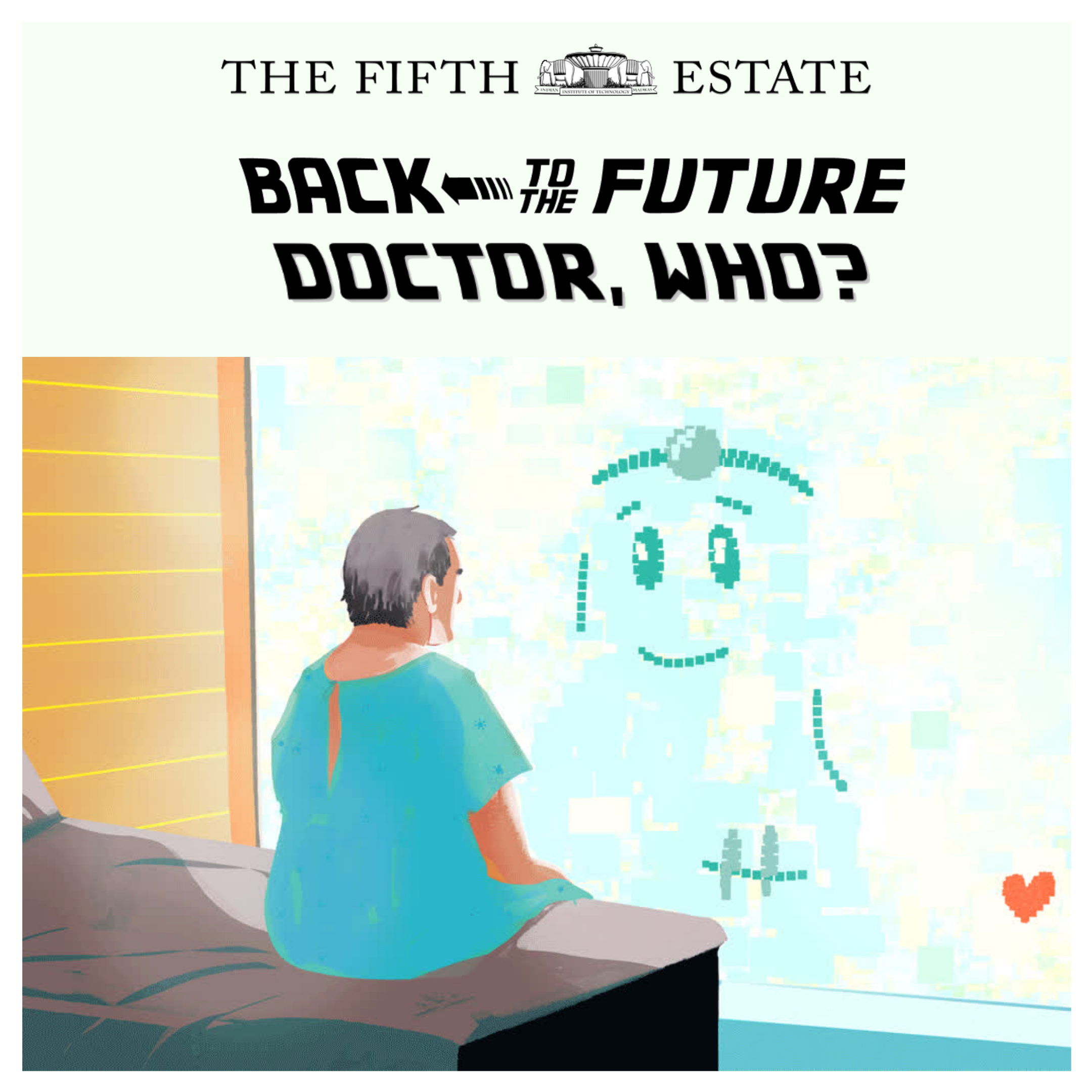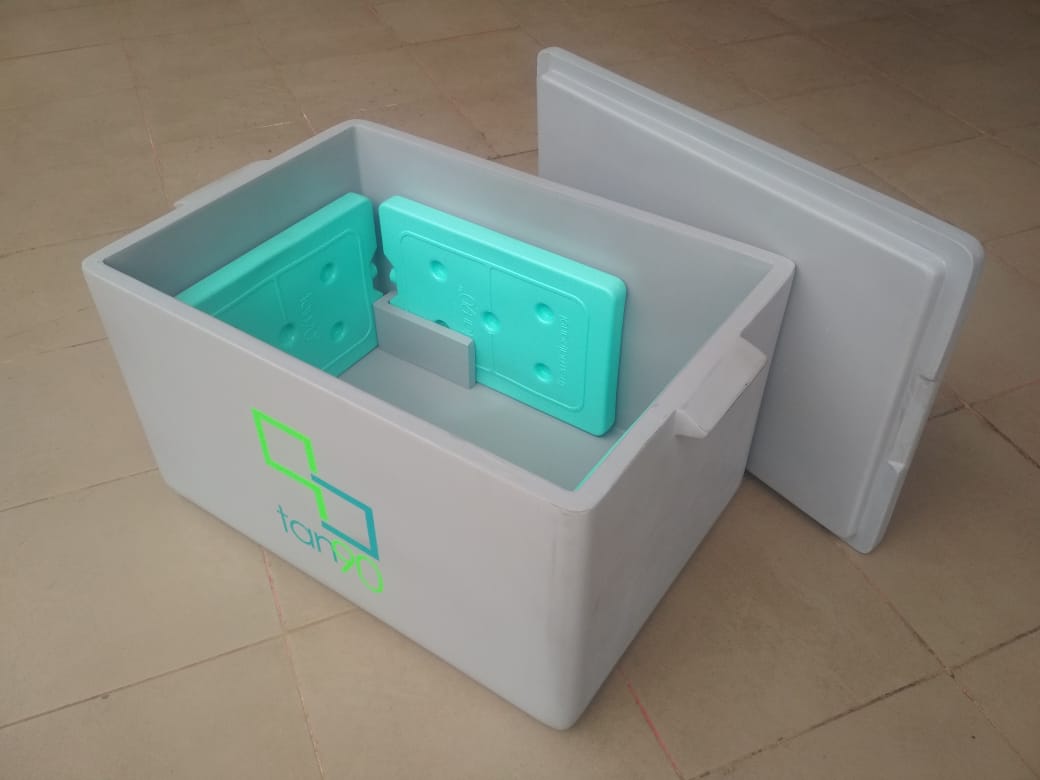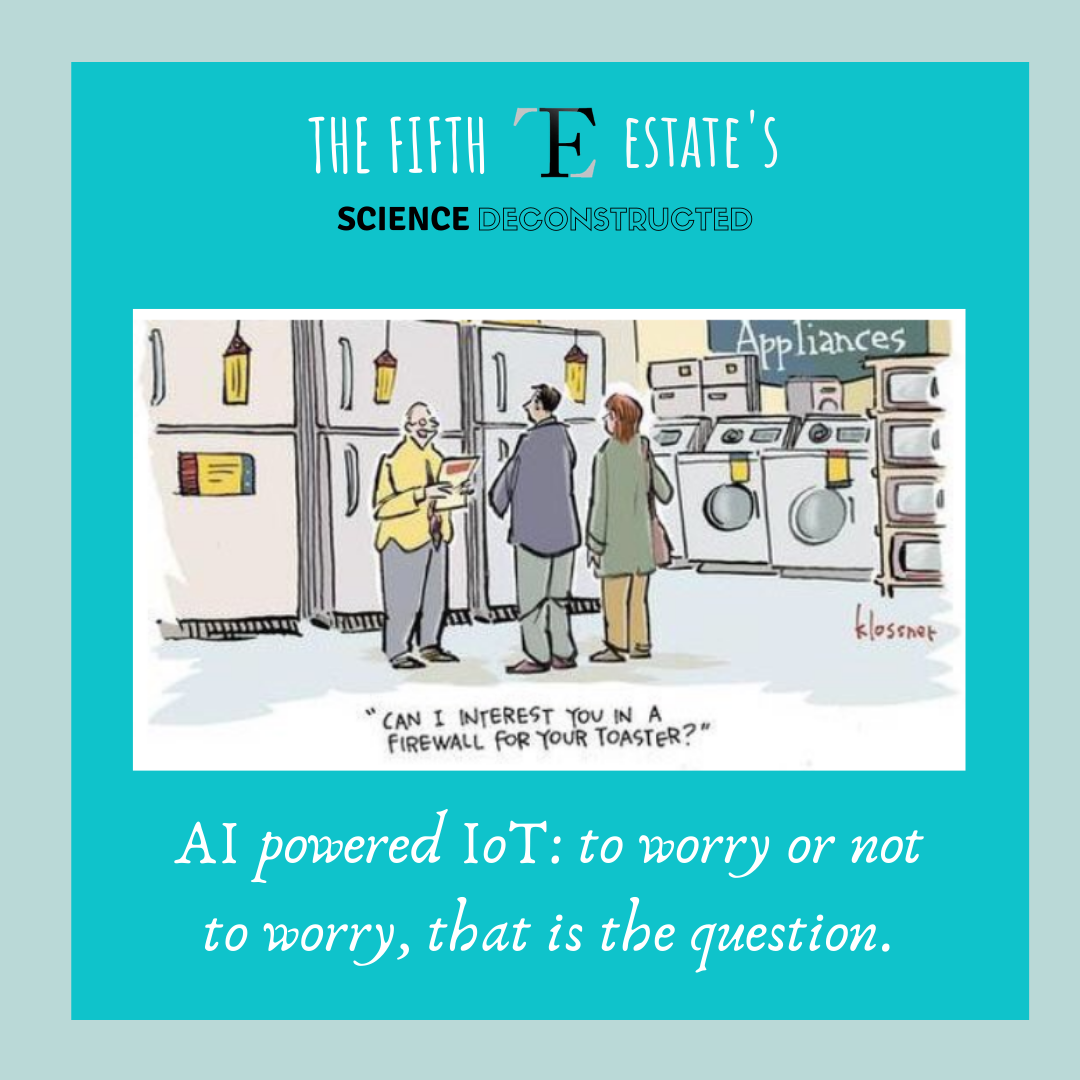Design by: Hardhik Pinjala
Mr X, a 74-year-old man living by himself in the remotest part of town, suddenly feels sick. He reaches out to MeTri, a palm-sized device, and scans it over his body. Within a fraction of a second, MeTri displays Mr X’s vital signs and the diagnosis, an elevated body temperature indicating mild fever. Instantly, Doc-E – the virtual medical assistant – takes charge, connecting Mr X to his physician, who lives miles away. The physician virtually examines him and assesses the vitals shared before prescribing medication. On another day, Mr X feels a slight nudge in his E-tattooed arm. Doc-E is immediately alerted. Before Mr X can comprehend what is happening, Doc-E notifies the nearest medical emergency team. It turns out to be a heart attack, predicted well in advance for Mr X to get timely medical intervention.
Does this sound too futuristic? Think again. Healthcare and technology are progressing so fast that the line between science fiction and reality has begun to get blurry. Sci-fi has not only inspired but also predicted revolutionary ideas in medical technology. For the sake of brevity, let us try to focus only on diagnosis and monitoring because “If we can predict, we can prevent, and if we diagnose, we can treat.”
From the ancient diagnostic methods relying on divination and empirical observation, to cutting open the body to understand the human condition, to the development of sophisticated diagnostic technologies (like microscopy and X-ray imaging) and laboratories – medical diagnosis has undergone a sea change. Photonic methods such as Laser Doppler flowmetry (LDF), tissue oximetry, and fluorescence spectroscopy have also emerged, which make way for non-invasive diagnosis.
Some of the best health-tech concepts drawn from the Sci-fi realm can undoubtedly be credited to Star Trek. With the starships boasting of cutting-edge sickbays and top-notch medical devices, the ideas envisioned for the future of medicine are awe-inspiring. Take, for instance, Dr McCoy’s Medical Tricorder (Tri- for its ability to scan, record and compute), which could very well be dubbed as a physician’s Swiss army knife. The Tricorder gave an instant health status update and helped Dr McCoy diagnose any condition by merely waving the scanner over the patient.
 The classic ‘Medical Tricorder’ introduced by Star Trek.
The classic ‘Medical Tricorder’ introduced by Star Trek.
Are we there yet?
In 2012, XPRIZE partnered with Qualcomm and announced the Qualcomm Tricorder XPRIZE in an attempt to bring this conceptual device to life. The participants had to develop a user-friendly mobile diagnostic device on the lines of the Tricorder. The requirements for the device were: to diagnose a range of health conditions and capture the five vital signs of the body- temperature, pulse rate, respiration rate, blood oxygen saturation (sPO2), and blood pressure.
Final Frontier Medical Devices (now Basil Leaf Technologies) won the XPRIZE competition with their AI-based prototype – DxtER, which could diagnose up to 34 conditions, including pneumonia and diabetes. The team, led by Dr Basil Harris, an Emergency medicine physician, developed DxtER by integrating multiple non-invasive sensors to collect data about the body’s vital signs, biochemistry and physiology with an AI-equipped device. The runners-up of the competition, Dynamical Biomarkers Group (DBG), led by Dr Chung-Kang Peng, developed an equally intriguing device with multiple miniaturised sensors (including those for blood sample tests and for diagnosing ear infections and melanoma). Other remarkable entries in the XPRIZE competition include Cloud DX’s ‘Vitaliti necklace.’
Another FDA approved device, ‘Viatom CheckMe,’ has also inched closer to realising the Tricorder. It is a multifaceted health tracker with wearable sensors to measure vital signs, in addition to possessing a repertoire of features such as an ECG Holter (for 24×7 monitoring of the heart), sleep monitoring and a pedometer.
At the heart of all these ‘real-life tricorders’ is an AI-based engine with smart assimilation of sensors such as Photoplethysmography (PPG), temperature sensors, MEMS-based accelerometers and microphones, (Electrocardiogram) ECG and Electroencephalogram (EEG) sensors for measuring electrical activities of the heart and the brain, and much more.
‘Lab-on-a-chip’ devices are also being explored to realise Tricorder-like devices, which analyse metabolite concentration to track health and disease. Metabolites are small molecules produced as a result of metabolic processes in the cells and can act as biomarkers for diseases.
In 2018, a team of researchers from Glasgow University developed the Multicorder, a rapid diagnostic device based on a CMOS (Complementary Metal Oxide Semiconductor) chip. The Multicorder can detect and measure the metabolite levels in body fluids such as urine or serum. With the ability to rapidly diagnose multiple conditions including cancer, heart attacks and strokes, the Multicorder is a perfect diagnostic tool for low resource settings.
While these hitherto ‘sci-fi’ gizmos testify to the potential of making healthcare more personalised and accessible, we are yet to proffer a one-stop solution for medical diagnostics like Star Trek’s Medical Tricorder. An all-purpose diagnosing device is the ultimate vision for futuristic medicine.
Elizabeth Holmes’ Theranos once gave us a glimpse of such a device (or so it seemed) with “a portable blood analyser that could conduct comprehensive blood tests from just a drop of blood.” But this turned out to be a tall, fraudulent claim. (If you haven’t heard of this ‘interesting’ scam, do watch the documentary ‘The Inventor: Out For Blood In Silicon Valley’).
However, gleaning only for the ‘credible’ facts, an all-in-one medical device could bring about timely diagnosis, which can direct us to a doctor when necessary or can tell us if we even need to visit a doctor. This can result in reduced unnecessary visits to hospitals and lesser waiting time. Especially beneficial for regions with scant medical care, they can make affordable healthcare available to all.
Now let us take one step back and look around us. The digitally connected world we live in has already laid deep roots in the healthcare sector. With the onset of the digital health revolution, smart homes and wearable technology (visible in the form of the Mi Bands, Apple Watches and Fitbit devices seen on everybody’s wrists these days), our smartphones have been turned into health trackers. Things are getting ‘APPy’! We now have apps tuned to our wearables to track our sleep patterns, structure our exercise regimes, monitor our blood glucose levels and blood pressure, and even detect heart attacks.
In retrospect, we have already entered a new era of medicine, where we can just swallow pills to monitor our health (capsule endoscopy) or to track medication. Thanks to a ‘medical mirror,’ we can keep a tab on our health while grooming ourselves. We can even flaunt a tattoo and monitor our vital signs at the same time.
E-tattoos or digital tattoos are the next game-changers in the world of health monitoring. According to Dr Bertalan Mesko, the Medical Futurist, E-tattoos could one day replace other wearable technology. MC10, a Massachusetts based company founded by John Rogers, strives hard towards that. Their FDA approved epidermal tattoo, BioStamp, is made up of stretchable metallic interconnects and rubber patches that can “sense, measure, analyse and communicate.” Just like temporary tattoo stickers, these stretchy wearable chips can be placed on our skin to monitor the vital signs, in addition to movement and muscle activities.
 The ‘Biostamp’ by MC10
The ‘Biostamp’ by MC10
Remember ‘Doc-E,’ the virtual robot from our earlier story? (Any resemblance to actual persons or robots is purely coincidental!) Robot companions are not new to our sci-fi inspired minds. From on-screen healthcare assistants like Baymax, the lovable inflatable robot (aka ‘Your personal healthcare companion’) from the movie ‘Big Hero 6’ to real-life robots like RP-VITA, it reveals to us how impactful remote diagnosis and telemedicine can be.

A still from the movie Big Hero 6
With Siri, Alexa, and Google assistant slowly becoming our virtual ‘family members,’ healthcare chatbots are not too far behind. We already have virtual health assistants like ‘Florence’ and ‘Ada,’ making entries into our lives. In fact, chatbots have the potential to become our primary point of care, our first go-to persons to find out what our rashes mean, or to connect to doctors for emergency care via telemedicine consultations.
The notion of telemedicine isn’t a modern one. In the February 1925 issue of the magazine, ‘Science and Invention,’ Hugo Gernsback envisioned the ‘Teledactyl’ (From Greek, Tele– far and Dactyl – finger’), an instrument which would help a doctor ‘feel and manipulate’ patients from a distance. Thus, the seeds of the idea of telemedicine were sown but reaped much later. In the late 1960s, several partners, including NASA, worked on advanced telemedicine technologies for space missions. Telemedicine gained much interest in the age of information explosion, and understandably, the future will be much brighter.
The animated sitcom, The Jetsons, initially aired in 1962, portrays life in the year 2062, where life moves at the push of a button. The future of healthcare, as portrayed in the show, gives us an optimistic outlook for our future, where healthcare will be personalised and, most importantly, accessible to all. However, in this process, we will be leaving behind a lot of data ‘footprints’. Since healthcare would be predominantly data-driven, adequate steps need to be taken to predict and address the ethics and privacy issues that arise out of it.

Elroy Jetson ‘seeing’ the doctor in The Jetsons.
The relevance of medical diagnostic technology has never been more lucid. COVID-19 has changed a lot about what we knew of health and disease. Digital health technologies are increasingly being invoked for such a time as this. It is being realised that there is a need for more advanced diagnosis and the means for digital health and remote health monitoring.
Faster and more accurate diagnosis and screening methods for practically any kind of disease, monitoring and treatment of infected patients with limited contact, bringing patients and doctors virtually closer through telemedicine – these paint the future of a health-driven utopian world. One crucial question, however, arises. With exponentially advancing AI entrusting us with overabundance of knowledge of our health, will it affect the medical profession as we see today? To put it bluntly, will technology replace doctors? Only time will tell.
One day we may have our own Elysium-like Med-Bay to keep us all healthy, but if not, let us hope that our efforts create a healthier world where we can ‘live long and prosper.’
Back to the Future is a series that looks at pop culture’s futuristic predictions about science and technology, and tries to break down the real-life facts behind them. Comments and suggestions are always welcome, you can send them to us at [email protected].
Series by: Amrita Mahesh




